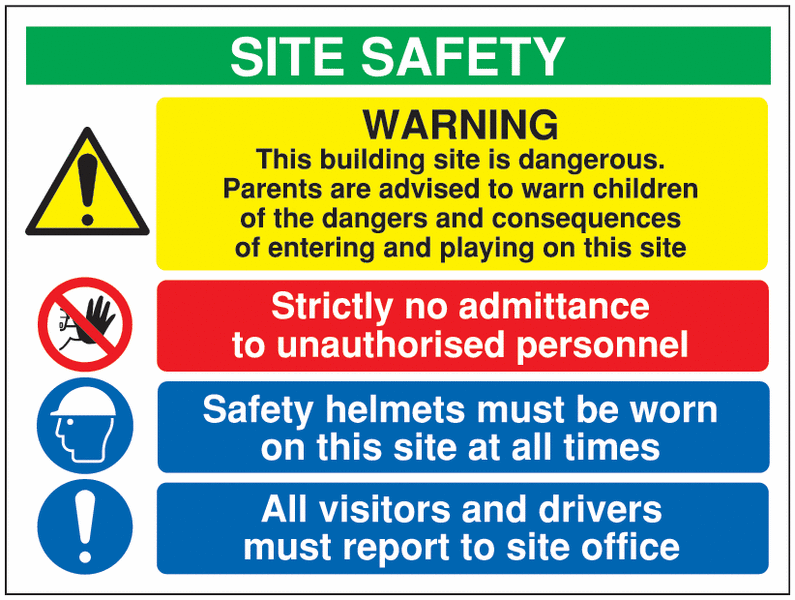Introduction
A construction management plan (CMP) is a document required by most of the London councils and other major councils in the UK, which outlines how a construction project will be managed and executed safely. CMPs are an essential part of the planning and approval process for construction projects, and they play an important role in ensuring that projects are completed safely, efficiently, and with minimal environmental impact.
The CMP typically includes information on safety and environmental management, stakeholder communication, project organization and responsibilities, construction methodology, risk management, and quality assurance. The environmental management section is particularly important, as it outlines measures for minimizing the environmental impacts of the construction project, such as reducing noise pollution, minimizing waste, and ensuring that the project does not harm local wildlife or ecosystems. A well-executed CMP can help construction projects proceed smoothly and avoid potential problems, while also ensuring that environmental impacts are minimized.
Is it a Planning Condition?
Yes. Construction Management Plans are usually a planning condition which is included in planning notices. Most councils requires this item to be discharged prior to the construction or demolition works.
What is included a Construction Management Plan?
1. Project Information
1.1 Project Scope
This section describes the project scope, either it is a new building, or a refurbishment, or an extension project. If the project includes any demolition works, this information also should be included under this section.
1.2 Planning Decision Notice Reference
If there is a planning decision notice which mentions about the CMP as a condition, it is worth to give a reference to the planning notice in this section.
1.3 Project Address
Project address, postcode, council and other address related information is included here. Also a map which pins the project address would be helpful for the council officers to understand the address clearly.
Tip: You can use online maps for including to the CMP report. However, you might want to double check the copyrights.
1.4 Project Timeline
Project timeline information is crucial for the report since Councils would want to see when the Principal Contractor is planning to start and finish the project. This gives a timeframe to Councils to supervise the project for safety and regulations. If the project scale is big, then it would be better to include a Gantt chart under this section.
2. Site Management
This section outlines the key factors for the site management including site personnel responsibilities, and contact information, welfare arrangements, visitors traffic, storage management information.
2.1 Site Team Information
Site contact person with his/her mobile number and email address is included her. Along with the other key site personnel.
Tip: You can include an organisation chart to describe the roles and people clearly. This is the ideal way for larger sites especially.
2.2 Site Welfare Arrangements

The site welfare arrangements include site offices, site accommodations, site cabins, WCs and other relevant items. It is important to mention planned site welfare arrangements and include all detail under this section.
As Liongate Construction, we usually prefer to prepare a sketch which explains every arrangement with legend and we add this sketch as an appendix to the CMP report.
3. Community Liaison and Communication
This is also another key section on the report. This subject covers “How does the principal contractor manage the liaison with the neighbourhood and public. If there is any complain or advise from the public, the Principal Contractor should have a policy to show how they will manage this complain. As per the regulations, it is an obligation to record these complaints and advices and take the required actions to mitigate them.
In this section the site contact person can be referred as a contact point. However, it is also crucial to mention about the complaint log and other relevant procedures to take the required precautions.
Tip: For larger projects; you can create a project website and refer that website for advices and complaints from public.
4. Site Safety, Operations and Management
4.1 Site Safety

Site safety is key for a project. The most important aim of a Construction Management Plan is covering site safety section. Therefore this section should include the all relevant information to indicate “How does the Principal Contractor manage the site works safely”.
The safety protocols to include but not limited to; site segregation, site lighting, safety signs, noise control, dust control, vibration control, and all other essential HSE practices.
“Mud control is key for the roads safety. So Councils are very strict to see the road safety related precautions in a Construction Management Plan Report”
— Charlie Abdullah, Director of Liongate Construction
4.2 UK Regulations which are important for the Construction Management Plans
There are key regulations which are crucial for the construction and demolition works. All works at sites should be inline with those regulations but not limited to.
Also, please do not forget to check the latest regulations from UK HSE website which you can reach here: https://www.hse.gov.uk/construction/
- Working at Height Regulations 2015 – These regulations specify the appropriate safety equipment and safe usage of ladders, scaffolding, and other similar tools. For instance, scaffolding should have double guardrails and toe boards to protect workers and ensure that objects and debris do not fall on passers-by. See the regulation here: Regulation.
- The Lifting Operations and Lifting Equipment Regulations (LOLER) 1998 – These regulations cover the use of cranes, on-board lifting devices on lorries, and other applications. They require the frequent thorough examination of equipment, proper training, and clear signage on machines. See the regulation here: Regulation.
- The Construction (Design and Management) Regulations 2015 – These regulations take a risk management collaborative approach to identify hazards and ensure that actions are in place to mitigate identified risks. See the regulation here; Regulation.
- Control of Asbestos Regulations 2012 – These regulations provide detailed guidelines on handling asbestos material and asbestos cement to minimize the risk to workers and the public, especially during demolition projects. See the asbestos regulations here.
- Control of Vibration at Work Regulations 2005 – These regulations are a response to the realization that the prolonged use of vibrating tools such as jackhammers results in ill health to users, typically hand/arm impacts, but also whole body in some instances. See the regulation here.
- Control of Noise at Work Regulations 2005 – These regulations recognize the irreversible damage to hearing caused by loud workplace noises and mandate actions such as limiting the maximum permitted decibels and supplying protective gear. See the regulation here.
- Manual Handling Operations Regulations 1992 – These regulations address the inherent risks when individuals lift, move, or push an object or load. Employers are required to carry out risk assessments and train employees in safe procedures and techniques. See the regulation here.
4.3 Site Operations
Site working hours is stated clearly under the Site Operations section. “Which days and which hours the site will be open?” Another key question for the council officers. Another key site operational information might be included under this section such as: deliveries, visitors, parking arrangements and more.
Tip: Every council has their own working hours restrictions. You need to check the Council’s Guidance for the construction sites working hours in the Council’s website.
4.4 Traffic Management

Traffic management is crucial for construction site safety. A comprehensive plan is necessary to minimize traffic congestion, reduce the risk of accidents, and ensure emergency services can access the site. Hazards and risks must be identified, appropriate measures put in place, and workers and drivers trained in safe practices.
To ensure effectiveness, the traffic management plan should be regularly reviewed and updated. By taking a proactive approach to traffic management, construction companies can minimize the risk of accidents and injuries and ensure the safety of everyone involved in the project.
4.5 Waste Management & Recycling

Waste management is a critical part of any construction project. With proper planning and execution, construction waste can be minimized and disposed of safely and responsibly. Effective waste management can also help to reduce costs and improve sustainability, making it a win-win for both the project and the environment.
The first step in effective waste management for construction sites is to conduct a waste audit. This involves identifying the types of waste that will be generated during the project and developing a plan to manage them. This might include separating waste into different categories, such as wood, metal, and concrete, to facilitate recycling or disposal. It’s important to consider the environmental impact of different disposal methods and to choose the most appropriate options.
Once the waste management plan is in place, it’s essential to communicate it to all workers on the site. Workers should be trained in proper waste handling procedures, including how to sort and store waste, how to use appropriate personal protective equipment, and how to communicate effectively with other workers and waste management providers. It’s also important to ensure that waste is stored securely and safely, to minimize the risk of accidents or contamination.
Regular monitoring and review of the waste management plan is essential to ensure its effectiveness. This includes measuring waste volumes and tracking waste disposal costs to identify opportunities for improvement. By taking a proactive approach to waste management, construction companies can reduce their environmental impact, improve sustainability, and reduce costs associated with waste disposal.

Conclusion
In conclusion, a construction management plan is a comprehensive document that outlines the safety protocols, quality control measures, and risk management strategies that will be implemented throughout a construction project. It serves as a guide for all stakeholders involved in the project, ensuring that everyone is aware of the safety requirements and procedures, and that risks are minimized. Ultimately, a well-executed construction management plan is critical to the success of any construction project.
Other Relevant Questions for Construction Management Plans
If you are looking for a CMP consultant
You can use our services. Please ask for a quotation. You can see our contact details here; Contact.